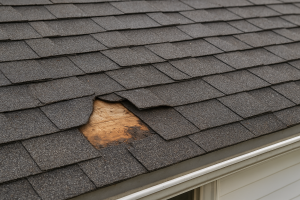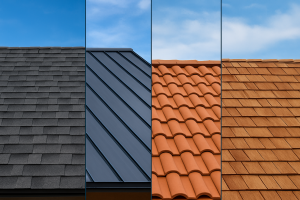The roofing repair industry has seen significant transformation in recent years, but 2025 is shaping up to be a landmark year. Driven by rapid advances in technology, changing climate conditions, and evolving homeowner expectations, roofing contractors are rethinking how they approach both repairs and customer service. From drone inspections to sustainable materials, the roofing landscape is shifting—and homeowners stand to benefit more than ever.
Smart Technology in Roofing Repairs
One of the biggest changes to hit the roofing repair industry in 2025 is the widespread adoption of smart technology. Roofing contractors now use drones and AI-driven inspection tools to assess damage with unmatched precision. These tools allow professionals to identify minor cracks, leaks, or structural weaknesses that might be invisible during a traditional inspection.
Additionally, smart roofing systems embedded with sensors are being installed more frequently. These sensors can alert homeowners about issues like moisture buildup, leaks, or temperature fluctuations before visible signs emerge. It’s a proactive approach that saves both time and money, and it’s reshaping the very definition of roofing repair.
Climate Change and Roofing Adaptation
2025 has also brought a greater emphasis on climate-resilient roofing. With record-breaking storms, intense UV exposure, and unexpected seasonal shifts, traditional materials are no longer cutting it in many regions.
Roofing repair specialists are now recommending more robust, eco-friendly materials like recycled metal shingles, solar-integrated tiles, and cool roofs with reflective coatings. These solutions not only withstand harsh weather conditions but also contribute to energy efficiency—a top concern for today’s eco-conscious homeowners.
Moreover, insurance companies are increasingly incentivizing upgrades to more durable roofing materials. Homeowners who invest in climate-resilient repairs may qualify for reduced premiums or faster claims processing. As a result, proactive roofing maintenance is now considered not just a cost-saving measure, but also a financially strategic move.
Labor Shortages Lead to Innovation
Like many skilled trades, the roofing industry continues to face labor shortages. But rather than lowering service quality, this has spurred innovation in training, safety, and automation. Many contractors are adopting robotic tools for tasks like shingle removal, nail placement, and even debris clean-up. These machines can handle repetitive tasks with precision, reducing the risk of injury and increasing efficiency.
To help bridge the skills gap, training programs are also becoming more accessible and tech-oriented. Virtual reality (VR) simulators are being used to teach repair techniques in a safe and immersive environment, reducing the learning curve for new technicians.
For homeowners, this means roofing repair projects are being completed faster and with greater accuracy. Companies that invest in high-tech tools and training—like those featured at weathertightroofing.com are becoming go-to providers in their communities.
Rise of On-Demand Roofing Services
Another trend reshaping the roofing repair landscape is the rise of on-demand services. Thanks to digital platforms and mobile apps, homeowners can now schedule inspections, receive quotes, and approve repair work without ever leaving their home. Some companies even offer same-day repair services for emergency situations like storm damage or severe leaks.
This shift has made roofing services more accessible and transparent. Real-time project updates, virtual consultations, and online payment systems have become standard practice for reputable roofing companies in 2025. These features not only improve customer satisfaction but also streamline project management for contractors.
Sustainability and Recycling Programs
Sustainability is more than just a buzzword in 2025—it’s a mandate. Roofing companies are now expected to follow eco-friendly practices, from sourcing sustainable materials to recycling old shingles and minimizing job site waste. Many contractors are even partnering with local recycling centers to ensure torn-off materials are processed responsibly.
Some states have introduced incentives for companies that follow green practices, which further motivates roofers to implement sustainable methods. For homeowners, this results in not only a greener footprint but often more durable and efficient roofing systems.
If you’re considering a repair or upgrade, working with a company that prioritizes sustainability—like those you’ll find can be a smart long-term investment.
Final Thoughts
The roofing repair industry is undergoing a technological and environmental evolution in 2025. With smarter inspections, more sustainable materials, and a stronger focus on customer convenience, the way we approach roofing repair is being redefined. For homeowners, these changes translate to more reliable service, better outcomes, and roofs that are built to last.
Whether you’re dealing with a leak, preparing for storm season, or simply upgrading to a more energy-efficient system, choosing a forward-thinking contractor is crucial. Be sure to consult professionals who understand today’s innovations and can offer tailored solutions for your home.







